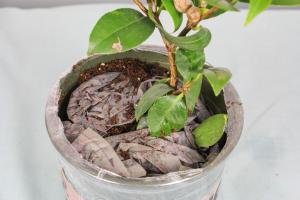Can You Plant Squash in Pots?
Are you interested in growing squash but don't have a large garden to cultivate them in? Fear not! Squash can be grown in containers, making it possible for anyone to enjoy the sweet, tender flesh of this delicious, nutritious vegetable. Here's everything you need to know about planting squash in pots.
Choosing the Right Container
When choosing a container for your squash, bigger is better. The bigger the container, the more room the plant will have to grow, and the more fruit it will bear. A container that is at least 12 inches deep and 24 inches wide should suffice for most varieties of squash. You can use a plastic, clay or ceramic pot, just make sure it has drainage holes to prevent water from accumulating and rotting the roots.
Prepping the Container
Before you plant your squash in its container, be sure to fill it with well-draining soil. You can use a mix of potting soil, compost and perlite to create an ideal growing environment for your squash. Fill the container at least two-thirds full with soil, leaving enough space at the top for your squash plant.
Choosing the Right Variety of Squash
Not all squash varieties are suitable for container gardening. Look for compact or bush-type varieties that are bred to produce fewer vines and take up less space. Some good options for container gardening include zucchini (Black Beauty, Eight Ball), crookneck squash (Early Prolific Straightneck, Golden Scallop), and pattypan squash (Sunburst, Peter Pan).
Planting Your Squash
Once you have your container and soil ready and have chosen your variety of squash, it's time to plant your seeds or seedlings. If planting from seeds, plant them about 1 inch deep and 2-3 inches apart. If starting with seedlings, plant them at the same depth they were previously growing at.
Water your squash plant regularly, keeping the soil moist but not waterlogged. Squash plants need at least 6 hours of sunlight per day to grow, so be sure to place your container in a sunny spot or provide artificial light if growing indoors.
Pest and Disease Control
One of the benefits of growing squash in containers is that it can reduce the likelihood of pest and disease problems. However, you should still keep an eye out for common squash pests such as squash bugs and cucumber beetles. If you notice any signs of infestation, remove the affected parts of the plant or use an organic pest control method.
Rotating your squash plants and avoiding overwatering can also help prevent fungal diseases such as powdery mildew.
Harvesting Your Squash
Squash plants typically produce fruit within 45-60 days of planting. When the squash reaches its mature size, it's ready to be harvested. Use a sharp knife or pruners to cut the fruit from the vine, leaving a small stem attached. Squash should be harvested when it's still tender and before the skin becomes tough and woody.
Enjoy your fresh, homegrown squash grilled, roasted or sautéed. Bon appétit!

 how many times do yo...
how many times do yo... how many planted tre...
how many planted tre... how many pine trees ...
how many pine trees ... how many pecan trees...
how many pecan trees... how many plants comp...
how many plants comp... how many plants can ...
how many plants can ... how many plants and ...
how many plants and ... how many pepper plan...
how many pepper plan...





























